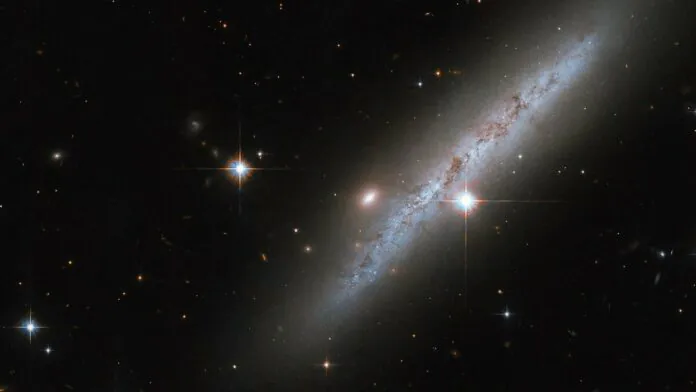© ROOT-NATION.com - Use of content is permitted with a backlink.
The Hubble Space Telescope took a picture of the spiral galaxy IC 4633, located 100 million light-years away in the constellation Apus. The picture was analysed by scientists from NASA, ESA and the Jetson spacecraft, as well as the National Science Data Center and the National Instruments Research Center.
The Hubble Space Telescope discovery of spiral galaxy IC 4633, combining the dark Chameleon Nebula and the mysterious Southern Celestial Serpent, creates an intriguing astronomical structure.

The image presented by ESA shows the galaxy IC 4633, a spiral galaxy located 100 million light-years away in the constellation Apus. This galaxy is rich in star formation and has an active galactic core, making it relatively easy for astronomers to see its billions of stars from a relatively wide perspective.
Although we can see all the features of the galaxy, we cannot fully appreciate it due to the presence of a region of dark dust. This dark nebula is a component of the star-forming Chameleon region, located only about 500 light-years away and in the neighbouring region of the Milky Way galaxy. Dark clouds in this area obscure both the name of the constellation and prevent the view of nearby constellations such as Apus. The cloud is well studied because of its young stars.

Located to the east of Cha I, II, and III, the overlay cloud IC 4633, also known as the Southern Celestial Serpent, is an Integrated Flow Nebula (IFN). It is a sight to behold, but it is not a bright object.
Read also:
- NASA talked about exciting space missions in 2024
- SpaceX postponed the launch of the Falcon Heavy with the X-37B orbital plane


